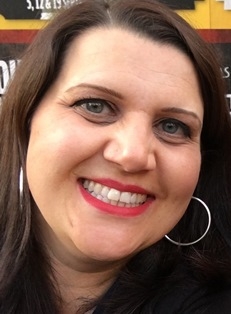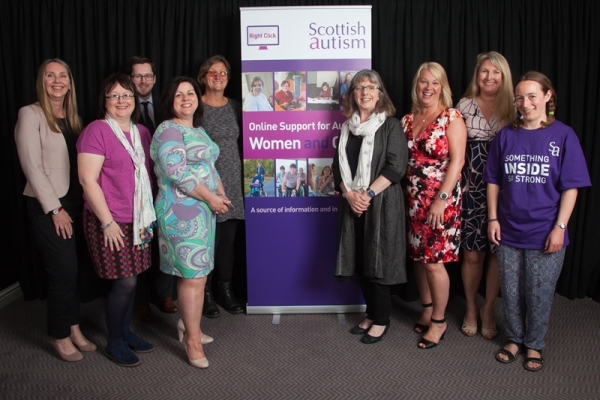Recalibrating the Radar: Girls and Autism, an Educational Perspective
Alina Spence, Outreach Teacher
Girls with autism are often described as ‘flying under the radar.’ The implication being that they are not in the correct range for detection. It might be more accurate to say that the girls are in the correct range for detection, but that the radar does not always detect them because it is looking for something else - a more overtly observable male presentation of autism. This stems from the fact that most historical and contemporary research into defining and diagnosing ASD through behavioural analysis has been done by the study of a predominantly male ASD population, even since the original studies by Kanneri and Asperger, resulting in girls (who display more introverted ASD behaviours) having been historically overlooked.
In recent years there has been more discussion and research in psychology and other areas about gender differences in autism presentation. This difference is crucial when considering how girls with autism present and prosper in educational settings
In my role as Outreach Teacher for high school pupils with communication difficulties, there are 21 female pupils in my caseload of 83 pupils. This accurately reflects the statistical ratio of one female in every four people diagnosed with autism. One of the key reasons for this difference in incidence of ASD in females is often considered that autism in girls looks different to autism in boys and is hence underdiagnosed. It has been suggested that the current diagnostic criteria for ASD do not fit the female presentation of autism.
The special interests of autistic girls, although very intense, tend to be similar to the interests of their neuro-typical female peers and are therefore sometimes not as observable. It is also thought that girls are more able to ‘mask’ their autism, in an effort to fit in, by using imitation to learn appropriate social behaviour. This repression of their true self could be the reason mental ill health, such as anxiety and depression, is more common among autistic females.
Emotional literacy forms a large part of my work with pupils, ranging from simply being able to identify common emotions, to anger management, mindfulness and relaxation techniques. The most common support I am asked to provide for high school girls is in the area of managing anxiety. Their anxiety stems from various sources, such as feeling overloaded by the demands of the curriculum, worry about academic performance, feelings of difference and striving for perfection. Effort to meet these demands and attempting to portray a veneer of coping can be exhausting for young women, leading to chronic anxiety and depression.
Discussion with female pupils with autism and their parents, along with my own experiences of working within several educational establishments, have identified the following areas of practice which support girls with autism to learn and develop in school.
Sharing information with open lines of communication is crucial - from an extended transition process between primary and secondary school with regular transition meetings involving parents and all relevant staff, to the use of case conferences involving all class teachers – it is important that school, home, educational psychologists and other agencies share any information that can help to support a pupil, and that this continues from nursery to post-school transition. This is in addition to the more traditional ways such as school reports and parent evenings.
Developing relationships
Relationships between pupils and teachers, Learning Support departments, parents and carers, and so on, are important to ensure that there is a support structure in place for pupils. Parents should feel able to call to speak to their child’s Key Person or Pastoral Support teacher; school staff should keep lines of communication open regarding successes and difficulties; and pupils should feel that they can trust teachers in order to share any challenges they are experiencing. As anxiety and depression are common for females with ASD, teachers will be able to identify any changes in a pupil’s mood or appearance once they have developed a good relationship with a pupil. A home-school diary is an excellent way of allowing parents and school staff to communicate as needed, as is a brief chat during handover time before and after school, or a quick telephone call.
Knowledge and understanding of autism in women and girls
It’s important that educators and other adults working or involved with girls with ASD have good knowledge of ASD in women and girls, and awareness of how autism, including high functioning autism, can present in girls, so that they can adopt and develop teaching and pastoral styles which are suited to the very individual pupils in their care. This also enables adults to be in a better position to identify female pupils who may have difficulties with social communication, which could lead to better assessment and diagnosis. Teachers may have a personal or professional interest in this, or may wish to learn this as a development area in their CLPL (Career Long Professional Development). It could even be considered as compulsory training for all teaching staff.
Diversity education
Teenagers as a whole shy away from difference as they feel a lot of pressure to conform, and it can be a difficult time to stand out from the crowd. Diversity education as part of the whole-school health and wellbeing curriculum is important to encourage acceptance and celebration of difference. There can be opportunities for this in Personal, Social and Health Education and in whole-school or year group assemblies, covering topics such as religious, cultural and neuro-diversity. Mainstream pupils may be aware of the terms dyslexia, ADHD, ASD etc., but they may not have much understanding of these additional support needs, including the way ASD presents in girls. We should not be in a situation wherein a peer told a pupil with Asperger Syndrome that, “I thought it only happened in boys.” Celebrations of diversity around, for example, World Autism Awareness Week can help to increase visibility and understanding of ASD, although embedding a culture of celebration of diversity in schools would have greater impact.
Peer support
Peer support can help to alleviate the common feeling among autistic people of ‘being different’. This can lead to feelings of alienation, and a struggle to enjoy successful long-lasting friendships and relationships. Girls who react to situations or problems in a non-typical way can find themselves ‘falling out’ with peers and struggling to repair broken relationships. It’s therefore important that they feel they have somewhere they can go where they know that being ‘different’ is a strength, and where there is not the perceived pressure to conform within a neuro-typical community. Social groups for young people with ASD are relatively common, but it is also helpful to specifically engage young women and girls with autism in a group setting. This is a place to feel welcome and to discuss specific challenges associated with being a young woman on the autism spectrum. Luckily, these are becoming more accessible in some areas, and will hopefully continue to grow.
Young women and girls with ASD make up a significant proportion of the school, and wider, community, and this proportion will likely continue to increase with our developing understanding of the way autism presents among the genders, ensuring that girls and women with autism are diagnosed correctly. Continued development of neuro-diversity awareness will hopefully ensure that these women are not flying under the radar for much longer.
Resources and Links
Leo Kanner who is accredited with being the first to define autism in children in 1943 in his seminal paper: Kanner L. Autistic disturbances of affective contact. Nervous Child 2, 217-250 (1943)
Asperger H; tr; annot. Frith U (1991) [1944] “’Autistic psychopathy’ in childhood”. In Frith U. Autism and Asperger Syndrome. Cambridge University Press. pp. 37–92. ISBN 0-521-38608-X
Wing L (1998). “The history of Asperger Syndrome”. In Schopler E, Mesibov GB, Kunce LJ. Asperger syndrome or high-functioning autism?. New York: Plenum press. pp. 11–25. ISBN 0-306-45746-6.
https://spectrumnews.org/features/webinars/webinar-thefemale-autism-conu...





